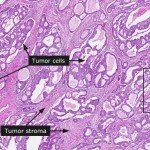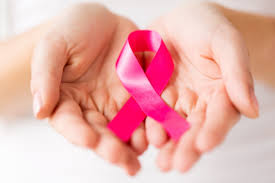
It would not be wrong to say that India is fast progressing towards a cancer epidemic. By 2020 70% of cancer cases the world over are going to be India. In an analysis published by the Indian Council of Medical Research cancer cases amongst women in four cities of Bangalore, Chennai, Delhi and Mumbai (1982-2005) showed an increase from 10 cases of breast cancer amongst 100000 to have risen to 23 and by 2020 it is expected to surpass cervical cancer. These figures are quite alarming.

I want to know more about breast cancer in India
Let us start by looking at some facts about Breast Cancer in India. This will help us understand the nature of this epidemic better. Some Facts related to breast cancer incidence & mortality in India:
• 22.9 age-standardized incident cases per 100,000 women were reported in the year 2008
• 11.1 age-standardized breast cancer deaths per 100,000 women were reported in the year 2008
• In 2010, 90,659 deaths took place due to breast cancer
• It is the most common cancer for women in Bangalore, Chennai, Delhi and Mumbai.
Factors influencing this trend
It is the most common cancer in urban India and the second most common in rural India.From the above mentioned facts it is clear that the cases of breast cancer are on the rise in the country. There are a multitude of factors that have a role to play in this rising incidence.
Let us briefly look at some of these factors that offer an explanation for this rise in cases of breast cancer.
• Urbanization and Westernization:
India is a fast developing economy. All the development is having an impact on the lifestyle and health of its people. Late marriages, means sex at a later age, lesser number of children, breastfeeding at a later age and for lesser period. All these factors tend to contribute towards increasing the risk of exposure to estrogen which further increases the risk of developing breast cancer.

• Lifestyle and diet changes:
The Indian women are opting for a western lifestyle. There has been a marked change with respect to their diet which is leading them towards obesity.
Accompanied with an increased intake of alcohol and exposure to smoke and sedentary lifestyle have made them more susceptible to breast cancer. Obesity is known to increase the risk of disease in women post their menopause.It is important to opt for a healthy diet.
• Lack of awareness and screening:
Breast cancer is something that does not exist for a large number of women till they find out a near or dear one suffering from it. Health care is not a priority amongst a large population and even in the major cities of the country.
Most cases reach the hospital when symptoms are observed. This generally happens to be stage 2B of the cancer. Early detection is important for improving on the chances of survival. It is important to promote cancer awareness and screening in the Indian setting.
Protection through Early Detection
The topic would be dealt in detail in a separate article. The fact is that early detection can go a long way in preventing the cancer and  improving the chances of survival. There are three methods for early detection. They are:
improving the chances of survival. There are three methods for early detection. They are:
• A Clinical Breast Exam (CBE)
• A Breast Self Exam (BSE)
• Mammogram
Do take care of your health. Early detection improves the chances of survival. So stop procrastinating and follow the tips that we have mentioned above. The government of India should ensure that it sets up free screening camps for breast cancer across the country and especially in the rural areas for increasing breast cancer awareness. When these attempts are made more and more cases of breast cancer will be noticed and we will be able to deal with the disease better. An aggressive approach to deal with the disease is a must.
References:
- Programme NCR. Time Trends in Cancer Incidence Rates 1982-2005. Bangalore, India: Indian Council of Medical Research; 2009
- Ferlay J BF, Pisani P, Parkin DM. GLOBOCAN 2000: Cancer Incidence, Mortality and Prevalence Worldwide, Version 1.0. 2001
- Organization WH. The global burden of disease: 2004 update: Department of Health Statistics and Informatics; 2008








